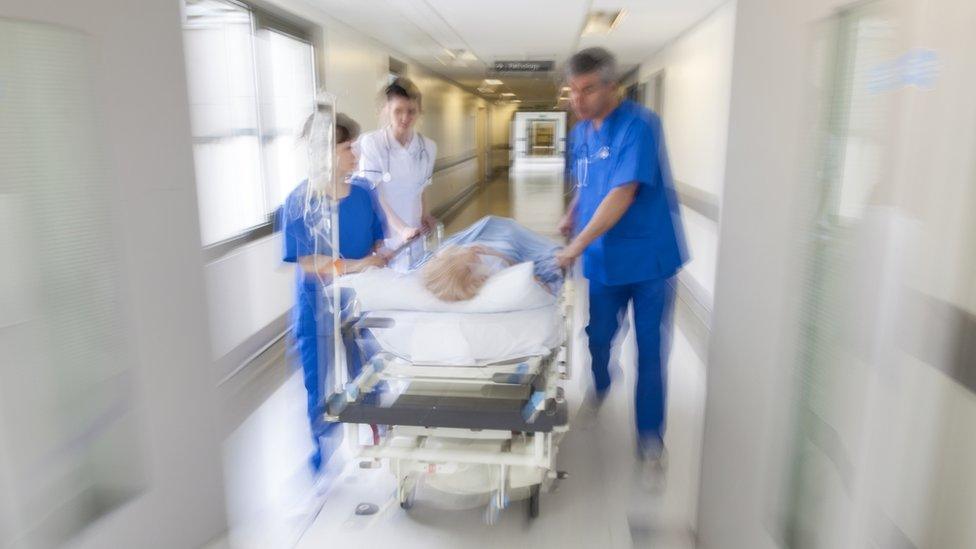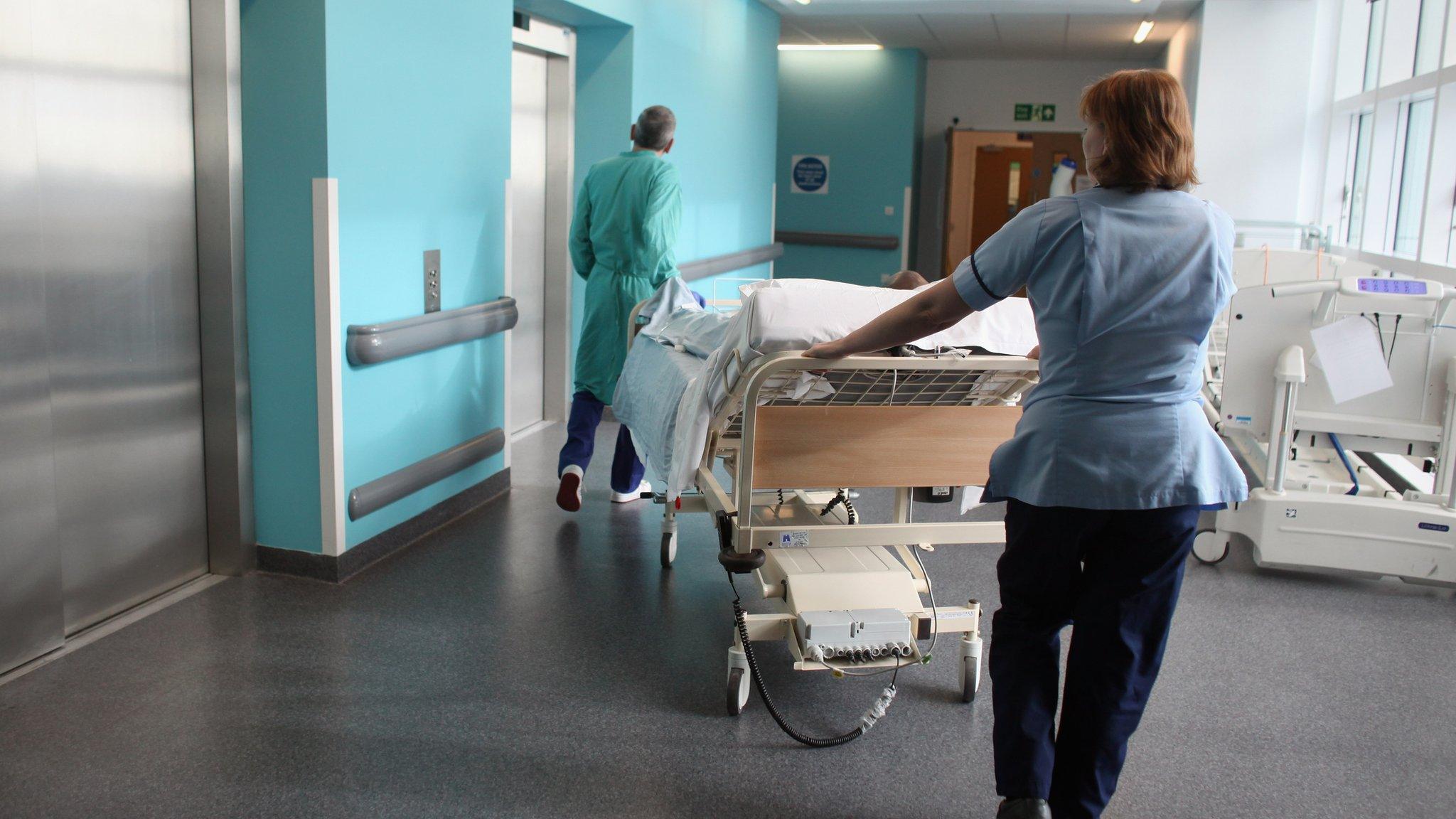Reality Check: Will one-third of NHS beds in England be cut?
- Published

The claim: The government plans to cut one-third of hospital beds in England.
Reality Check verdict: We do not have enough data to put a figure on the proportion of beds that will close under current plans. Only one-third of local NHS plans give any information about bed closures.
Labour leader Jeremy Corbyn said at Prime Minister's Questions this week: "Her government is proposing, through sustainability and transformation, to cut one-third of the beds in all our hospitals in the very near future."
He was referring to the Sustainability and Transformation Plans (STPs), which are the plans that local NHS areas have been asked to come up with to change services in order to make themselves financially sustainable.
They are part of NHS England chief executive Simon Stevens' Five Year Forward View. England has been divided into 44 areas, each of which has its own STP.
Although some of the STPs have quite precise plans, others are quite vague.
That means it is difficult to come up with a precise figure for the number of beds being closed.
In fact, according to Labour Party health researchers, only 14 of the 44 STPs mention bed closures. That is one-third of the STPs, although that might just be a coincidence.
Mr Corbyn's team has been unable to show Reality Check where he got the number that he used in Parliament.
Among the STPs with the most precise figures was Derbyshire, where 535 of 1,771 beds will be cut by 2020-21, a cut of 30%.
West, North and East Cumbria plans to reduce beds in cottage hospitals (smaller hospitals, often in rural areas) from 133 to 104, with beds at Cumberland Infirmary and West Cumberland Hospital going from 600 to 500. That's an 18% cut overall.
It illustrates another difficulty with these figures, which is that not all beds are the same. Having an acute bed is not the same as having a bed in a day unit or an A&E bed, for example.
Also, some of the plans involve trying to treat people in ways that do not involve using hospital beds, through the use of home treatment, for example, which makes it harder to interpret bed closure figures.
So an overall figure for bed closures would need a great deal of clarification, but it is clear that we do not yet have enough data to reach such a figure.



- Published21 December 2016
- Published26 August 2016

- Published17 November 2016
- Published14 November 2016

- Published31 October 2016